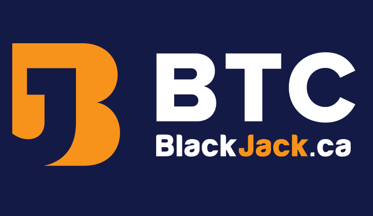PVP-21: An Introduction to Tournament Blackjack Rules & Prize Structures

Blackjack is a card game unlike most. Multiple people are welcome to participate, but they do not compete against one another. Instead, blackjack is a game that encourages camaraderie among the crowd. Players collectively cheer on their neighbors in a fellowship that derives from a single, communal goal – to beat the dealer. But there’s one form of blackjack in which we quietly (or boisterously) wish terrible luck unto those who play alongside us. I’m talking, of course, about blackjack tournaments.
In a tournament, it’s every man and woman for themselves. Utilizing standard blackjack rules, players compete hand after hand against the dealer. This is the only way to get ahead. But the systematic goal is to beat out the other players. Because in a tournament, there can be only one true winner. That title goes to the last player standing, or in a timed event, the player with the most chips after the final hand is decided.
How to Play Competitive Blackjack Tournaments
There are two basic types of 21 tournaments. The first and most common is an Elimination Event. The second is what we call a Non-Elimination event, or a Mini Tournament. We’ll take a quick look at each of these to help you understand how they work, and the small but critical difference between the two. If you’re familiar with poker tournaments, you can think of an elimination event as a large-scale multi-table tournament (MTT), and a mini event like a sit’n’go tournament (SNG).
Elimination Tournament Blackjack Rules
An elimination blackjack tournament is one that takes place in segments. The most famous was the Ultimate Blackjack Tour (UBT), a live-television event airing in 2006-07 on CBS, featuring such famous players as Canada’s own Monica Reeves. Unfortunately, it was cancelled after just two seasons. Turns out, people love playing blackjack far more than they enjoy watching it.
These are long events, usually lasting at least a few hours, if not days. They are designed to host a large group of players which, by nature, translates to larger prize pools. First place will get the largest prize, of course, with additional prizes that get smaller by position. Somewhere between 10-20% of the field will share in the prize, depending on the number of registrants.
An elimination tournament will have a specific number of play levels. The more players there are, the more levels you can expect. Each segment will see the cut in half, with everyone remaining in the final segment sure to cash. For example, you might have a 200-player event split into 4 intervals of 1-hour game play. Here’s how that might look.
$10+$1, 4-Tier Elimination Blackjack, 200 Max
The $10+$1 refers to the buy-in and entry fee. Each player pays $10 directly to the prize pool, plus a $1 entry fee to the casino that’s hosting it ($11 total).
4-Tier means there will the tournament will last four sessions, or rounds. The first session ends with the elimination of half the field. The same occurs after the second session, and again after the third. The fourth and final round determines the winners.
200 max refers to the maximum number of players that can enter. If the tournament attracts a full field of 200, it will boast a $2,000 prize pool.
Level 1: 200 players converge at the tables, playing blackjack by all the standard rules. They can place any size bet within the table limits. After the final hand is played, the top 100 players with the highest chip stacks will remain. All others lose.
Level 2: The table limits increase for the second round of play between the remaining 100 players. When time runs out, the field shrinks by half again, eliminating the 50 players with the lowest chip stacks.
Level 3: Another round of play begins at higher table limits. Once more, the field loses half its players, leaving only to the top 25 chip stacks.
Level 4: In this final round of play, everyone is guaranteed a payout for finishing in the top 12.5% of the field. The lowest stacks at the end of the tournament will win an amount just above or equal to their buy-in, while the biggest prizes go to the top 3 finishers. The prize structure might look like this:
Prize Structure
- 1st Place – $1,000
- 2nd Place – $350
- 3rd Place – $150
- 4th-10th – $35
- 11th-20th – $20
- 21st-25th – $11
Mini Tournament Blackjack
This version is similar to the last, except that there are no separate levels, no intermissions, no eliminations. Mini tournaments cater to smaller groups of players, where everyone competes until they run out of chips. The last player with a stack to their name is the winner.
Much like the field of entrants, the buy-in for a small-scale event like this is usually cheaper (but not always). It might be $2+$0.20, or $5+$0.50. The prize pool is more likely to go to the top 2 or 3 players, if not a single winner-takes-all structure.
These are what you might call the SNG tournaments of the blackjack world. A mini tournament can be held anytime, anywhere, so long as there’s enough players ready to buy in. A true SNG style tournament will begin the moment there are enough entries. Others non-SNG style tournaments will require pre-registration, with a specific start time.
In these events, no player suffers elimination. Instead, the minimum bet requirement will increase intermittently every time a set number of hands takes place. In this way, the length of the tournament is easily controllable, ensuring a victor in a decent amount of time, simply because a below-average stack won’t be able to keep up.
Other Types of 21 Tournaments
While these two event structures make up the vast majority of live and online blackjack tourneys, there are other types and variations to keep an eye out for – especially this next one.
A favorite of many gamblers is the Blackjack Freeroll. These are tournaments that cost nothing to enter, but award real cash prizes to the top finishers. Freerolls can be held in any format, but will most often host massive fields of players with quick-level elimination play. In this way, thousands of players can compete in a freeroll in just a few hours or less.
Another popular type is a Guaranteed Tournament. Its name is derived from the fact that a minimum amount of cash is guaranteed to be paid out from the prize pool, regardless of how many people enter. Maybe the buy-in is $100 with a 200 max field size, and a $10,000 GTD prize. It would take 100 entries to cover the guarantee, but if only 80 people enter, the casino will add in the last $2,000 to fill the gap. This is what the gambling community calls an “overlay”, and it’s something every pro finds extreme value in.
A Satellite Tournament is another interesting option. Satellites are cheap-entry tournaments that award the top finalists with a free entry into a bigger competitive blackjack tournament. For example, you might only pay $1 to enter a satellite, and if you win, you get a seat in a $100 buy-in event.
Finally, you can enter Rebuy Tournaments, where getting knocked out in the first round comes with a chance to buy back in for round 2. Rebuys aren’t as common in blackjack as they are in poker, but they’re great for players who don’t mind spending a little extra cash for a second chance at a big prize.
